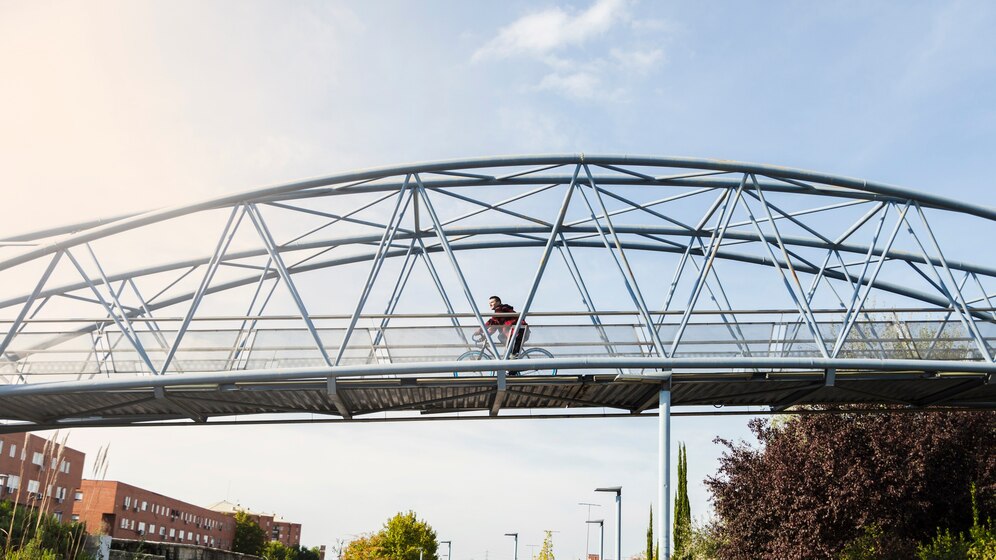Every profession seems to have its own inside jokes, and engineering is no exception. Among bridge engineers and enthusiasts, the age-old quip, “Why did the bridge fall down? Because it didn’t pass its final exam,” has stood the test of time. Equal parts playful and profound, this joke resonates on multiple levels—from its cheeky critique of design flaws to its subtle nod to the rigorous science of bridge engineering. But why exactly does this simple question-and-answer punchline attract such attention?
This blog takes a closer look at the infamous “Why did the bridge fall down?” joke, exploring its origins, humor, and its underlying lessons for those fascinated by the art and science of bridge engineering. From understanding how humor bridges gaps (pun intended) to reflecting on real-world engineering failures, we’ll unpack why this joke holds meaning for professionals, enthusiasts, and comedy lovers alike.
The Science Behind Bridges
Before we dissect the humor, it’s important to understand what makes a bridge stand tall—or, in some unfortunate cases, fall. At its core, bridge engineering combines art, physics, and meticulous design to create structures that defy gravity and carry immense loads.
The Basic Principles of Bridge Engineering
Bridges must balance three key forces to remain stable:
- Compression (pushing forces): These act downward on the structure. For instance, the weight of cars on a bridge exerts compression on the materials below the roadway.
- Tension (pulling forces): These act outward or elongate parts of the structure. Suspension bridges, for example, rely heavily on tension within their cables to maintain stability.
- Shear (sliding forces): Shear forces occur when parts of a bridge experience sideways stress, often during earthquakes or high winds.
Types of Bridges and Their Unique Challenges
Different designs have evolved to meet the requirements of landforms, environmental conditions, and usage. Common types include:
- Beam Bridges: The simplest design, featuring horizontal beams supported at each end. These are cost-effective but face limitations in span length.
- Arch Bridges: Featuring curved supports, they’re known for their ability to handle both compression and tension.
- Suspension Bridges: Among the most elegant structures, these use cables and towers to span vast distances while minimizing material use.
- Cable-Stayed Bridges: Often confused with suspension bridges, they feature cables radiating directly from towers to support the deck.
Each design comes with its unique strengths and risks. Unfortunately, a miscalculation—or even a failure in communication—can lead to catastrophic consequences.
The Joke Unpacked
Now that we’ve covered the science, it’s time to dissect the humor. The punchline, “Because it didn’t pass its final exam,” cleverly parallels the rigorous testing bridges must undergo during design and construction with the struggle of students tackling their final exams.

Why the Joke Resonates Across Audiences
For engineers, this joke is a witty acknowledgment of the pressure and accountability they face. Bridges are subjected to structural analysis, stress testing, and environmental modeling, much like a student prepares for exams. Passing these “tests” is critical for a bridge to function safely. For non-engineers, the joke works on the simpler, relatable level of academic failure.
The joke also serves as a reminder that even bridges must “prove themselves” in real-world conditions, where outcomes are far more significant than just a passing grade.
Real-life Bridge Failures
Laughter aside, real-life examples of bridge collapses remind us why the metaphorical “final exam” is no joke. Each failure teaches engineers crucial lessons about materials, design, and environmental impact.
Notable Bridge Collapses and Their Causes
- The Tacoma Narrows Bridge (1940)
Known as “Galloping Gertie,” this suspension bridge famously collapsed due to aeroelastic flutter caused by strong winds. The collapse demonstrated the need for better aerodynamic testing in bridge design.
- The Silver Bridge (1967)
A failure in an eyebar link caused this Ohio River bridge to collapse, claiming 46 lives. It highlighted the risks of undetected material fatigue.
- The Morandi Bridge (2018)
This tragic collapse in Genoa, Italy, taught the engineering community about the dangers of aging infrastructure and the critical need for maintenance and retrofitting.
While these incidents are somber reminders of what’s at stake, they also underscore the importance of learning from failures to create safer, more resilient structures.
The Role of Humor in Engineering
Though engineering is a serious discipline with real-world implications, humor remains a powerful tool for education and camaraderie. A well-timed joke like “Why did the bridge fall down?” can break the ice in the classroom or workplace while subtly reinforcing key lessons.
Humor as a Teaching Tool
Engineering educators often use humor to make complex topics more relatable. A quick quip like, “Did you hear about the bridge that didn’t ‘span’ its load correctly?” not only gets a laugh but reinforces the importance of load distribution.
Building Community Through Humor
For professionals, inside jokes foster a sense of community. Sharing a laugh reminds engineers that perfection is an ongoing pursuit and that even the best in their field work within a learning curve.
Community Responses to the Joke
What do real-life engineers, bridge enthusiasts, and comedians think about this joke? We reached out to a few to find out.
- Dr. Lisa Hart, Structural Engineer
“Humor brings lightness to a profession that carries a lot of responsibility. ‘Why did the bridge fall down?’ is a favorite in our office—every time someone miscalculates deflection, you can bet that joke makes the rounds.”
- David Cheng, Bridge Enthusiast
“I love this joke because it makes engineering accessible. It’s proof that professional concepts can be funny to everyone, not just engineers.”
- Samantha Jones, Stand-up Comedian
“Jokes about bridges are gold. Engineers love them because they’re in on the technical side, and everyone else loves them because they’re simple.”
More Than Laughter—Reflections on Engineering Resilience
The joke, “Why did the bridge fall down?” may elicit chuckles, but its underlying message is deeply meaningful. Bridge engineering is as much about learning from failure as it is about achieving success. Real innovation happens when we balance knowledge with humility, using setbacks as stepping stones for improvement.
Whether you’re an engineer designing structural marvels, an enthusiast marveling at every new build, or a comedy fan enjoying a clever pun, it’s clear this joke connects us all (pun intended again!).
Do you have your own favorite engineering jokes or stories? Share them in the comments below or join the conversation with others in the bridge and engineering community. For those wanting to explore deeper insights into bridge engineering, we encourage you to dig into some of the historical cases mentioned here—because every failure offers a new lesson.
